
|
|

|
YOU ARE HERE:>>REAL or FAKE>>Fake erotic Old Babylonian plaques.
February 2011.
This ebay auction last year rather impelled me to do a page or two on this type of artefact.
Not that this one is genuine of course!
.
There are many types of Old Babylonian plaque and this type generally speaking is well attested.
They were thought to have been used for votive purposes.
This first one shown here one is in the British Museum.
.
These two are in the Louvre.
The one below is another example of the beer pot resting on a seat.
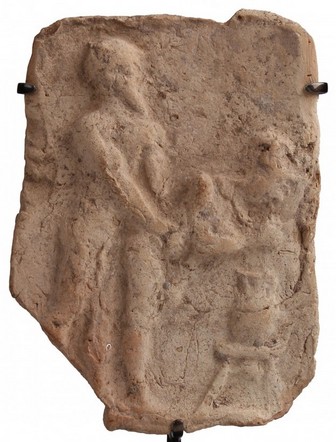
Another variant
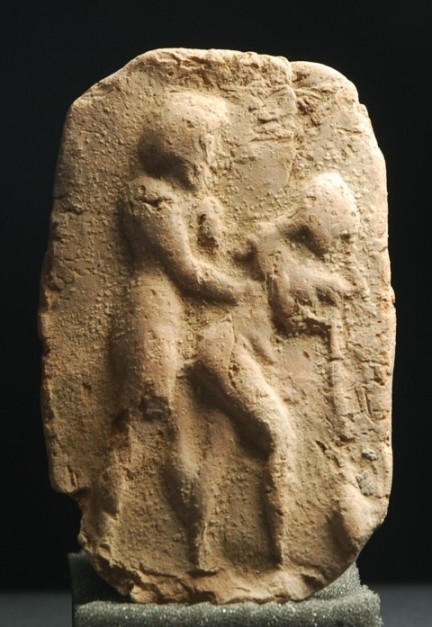
.
A mould for one was sold at auction in London and another variant as well.
I do not know if either is genuine or not.
.
. Here is another variant which I believe to be genuine>>>>>>>
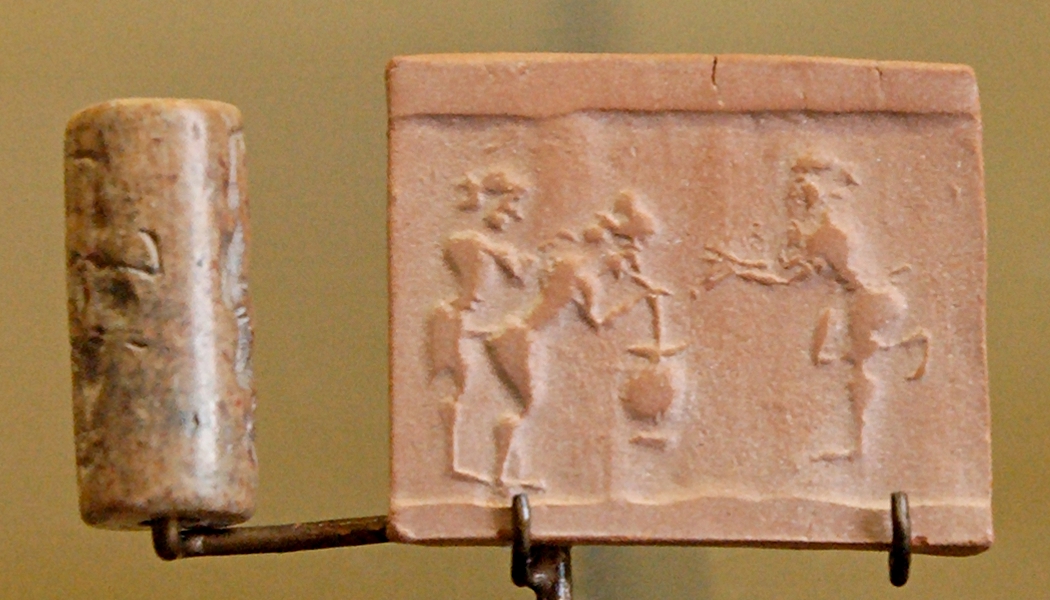
.
This erotic beer drinking scene is also shown on a cylinder seal.
This one is in The Louvre.
.
- In addition to the obvious activity portrayed here it depicts what was the preferred method of beer drinking in ancient Mesopotamia: through a long reed straw.
- The straw was actually rather necessary because ancient brewing involved the use of bread to begin the fermentation process, thus creating a layer of gunge floating on top of the beer and indeed probably within the liquid as well.
- You could either strain the beer into another vessel to remove the top layer, or you could just stick a straw in and enjoy.
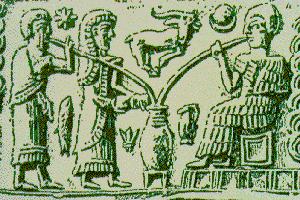
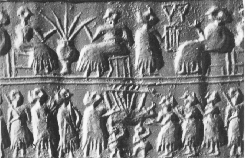
.
- Beer was such an important staple in Mesopotamian life that the Code of Hammurabi included laws regulating beer and beer taverns so that citizens would be encouraged to enjoy their beer responsibly.
- Beer is a very ancient product. Some have even claimed that barley was first cultivated not for bread but for beer.
- Most straws were probably made of reeds, so they have not survived, though metal straws, in gold and in bronze have been found in archaeological excavations . One reads that bone and metal strainer tips were attached to the end of straws but I've not seen this in any archaeological book whereas it is also written that the metal straws were sealed at the end but had perforations in the sides near mouth tip.
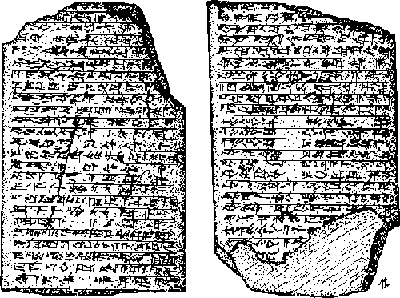
.
- When they were drinking, Sumerian's apparently toasted each other with the expression Nin-kasira "To Nin-kasi".
- Nin-kasi was chief brewer and possibly wine-maker of the great god En-lil and thus of all the gods. It was Nin-kasi's particular responsibility to provide alcoholic beverages, above all, beer, for the temples of the Mesopotamian sacred city Nippur. Many other temples maintained brewers to make the beer to be used in rituals.
- Her father was Enki, the lord Nudimmud, and her mother was Ninti, the queen of the Abzu. She is also one of the eight children created in order to heal one of the eight wounds that Enki receives. Furthermore, she is the goddess of alcohol. She was also borne of "sparkling fresh water." She is the goddess made to "satisfy the desire" and "sate the heart."
- There is a famous Old Babylonian cuneiform tablet which records The Hym to Ninkasi for the making of beer.
- The "Hymn to Nin-kasi" is one of two extant "Sumerian drinking songs" dating from the Old Babylonioan Period in 8th century B.C. It is primarily concerned with the beer-making process.

.
The two songs in the hymn are always found together, though their contents differ. The first one describes the step-by step process of Sumerian beer brewing, from the preparation and heating of barley mash to the fermentation of the liquid. The second part celebrates the containers in which the beer was brewed and served and includes the toasts in drinking songs.
This has been used as the basis of creating a modern version of Sumerian beer by the aply named Ninkasi Brewing company.


Home | About This Site | Privacy Statement | Gallery | Testimonials | Guarantees
About Collectors' Resources pages | What's New
Search | Site Map | Contact Us